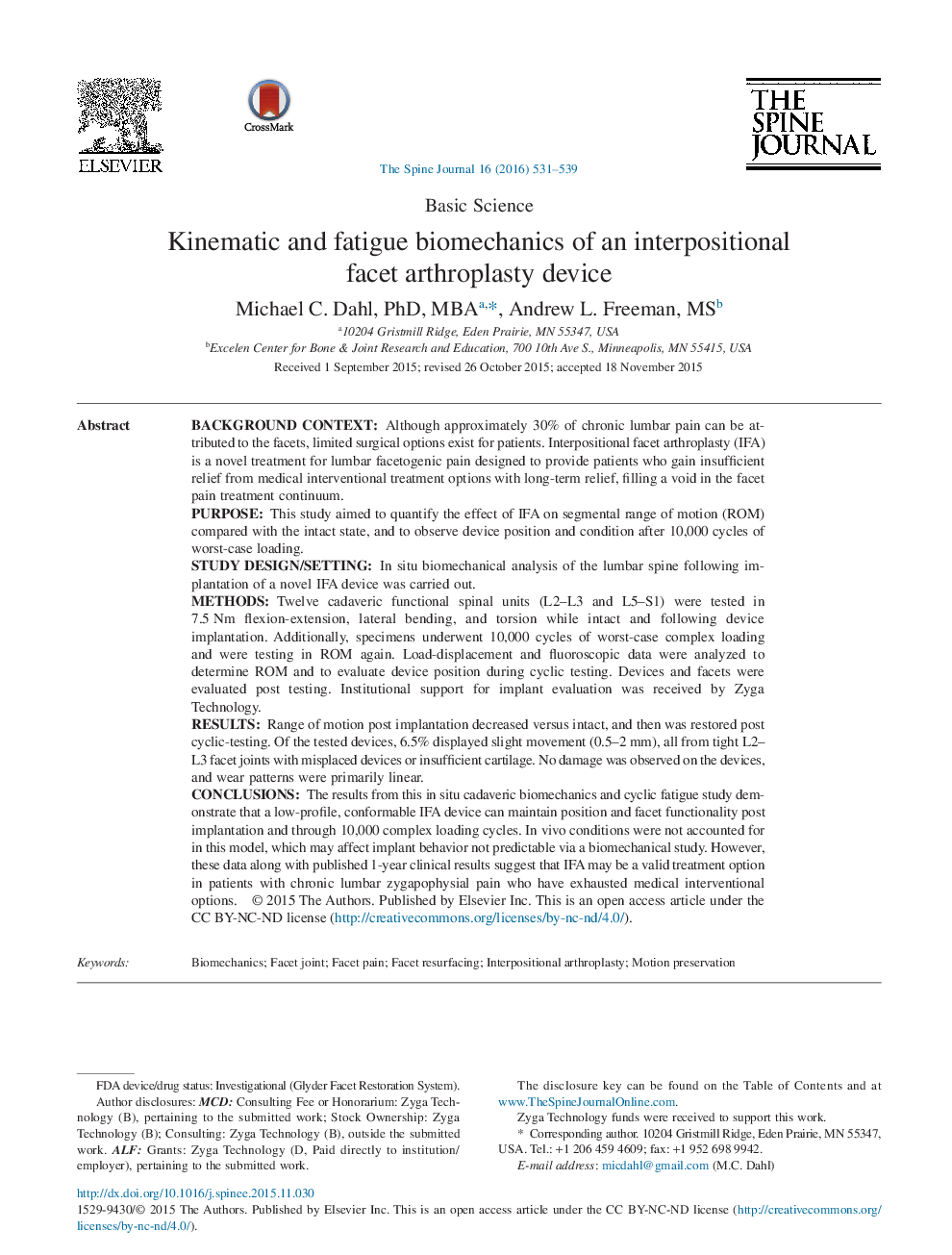| کد مقاله | کد نشریه | سال انتشار | مقاله انگلیسی | نسخه تمام متن |
|---|---|---|---|---|
| 6211721 | 1268557 | 2016 | 9 صفحه PDF | دانلود رایگان |
Background ContextAlthough approximately 30% of chronic lumbar pain can be attributed to the facets, limited surgical options exist for patients. Interpositional facet arthroplasty (IFA) is a novel treatment for lumbar facetogenic pain designed to provide patients who gain insufficient relief from medical interventional treatment options with long-term relief, filling a void in the facet pain treatment continuum.PurposeThis study aimed to quantify the effect of IFA on segmental range of motion (ROM) compared with the intact state, and to observe device position and condition after 10,000 cycles of worst-case loading.Study Design/SettingIn situ biomechanical analysis of the lumbar spine following implantation of a novel IFA device was carried out.MethodsTwelve cadaveric functional spinal units (L2-L3 and L5-S1) were tested in 7.5âNm flexion-extension, lateral bending, and torsion while intact and following device implantation. Additionally, specimens underwent 10,000 cycles of worst-case complex loading and were testing in ROM again. Load-displacement and fluoroscopic data were analyzed to determine ROM and to evaluate device position during cyclic testing. Devices and facets were evaluated post testing. Institutional support for implant evaluation was received by Zyga Technology.ResultsRange of motion post implantation decreased versus intact, and then was restored post cyclic-testing. Of the tested devices, 6.5% displayed slight movement (0.5-2âmm), all from tight L2-L3 facet joints with misplaced devices or insufficient cartilage. No damage was observed on the devices, and wear patterns were primarily linear.ConclusionsThe results from this in situ cadaveric biomechanics and cyclic fatigue study demonstrate that a low-profile, conformable IFA device can maintain position and facet functionality post implantation and through 10,000 complex loading cycles. In vivo conditions were not accounted for in this model, which may affect implant behavior not predictable via a biomechanical study. However, these data along with published 1-year clinical results suggest that IFA may be a valid treatment option in patients with chronic lumbar zygapophysial pain who have exhausted medical interventional options.
Journal: The Spine Journal - Volume 16, Issue 4, April 2016, Pages 531-539
